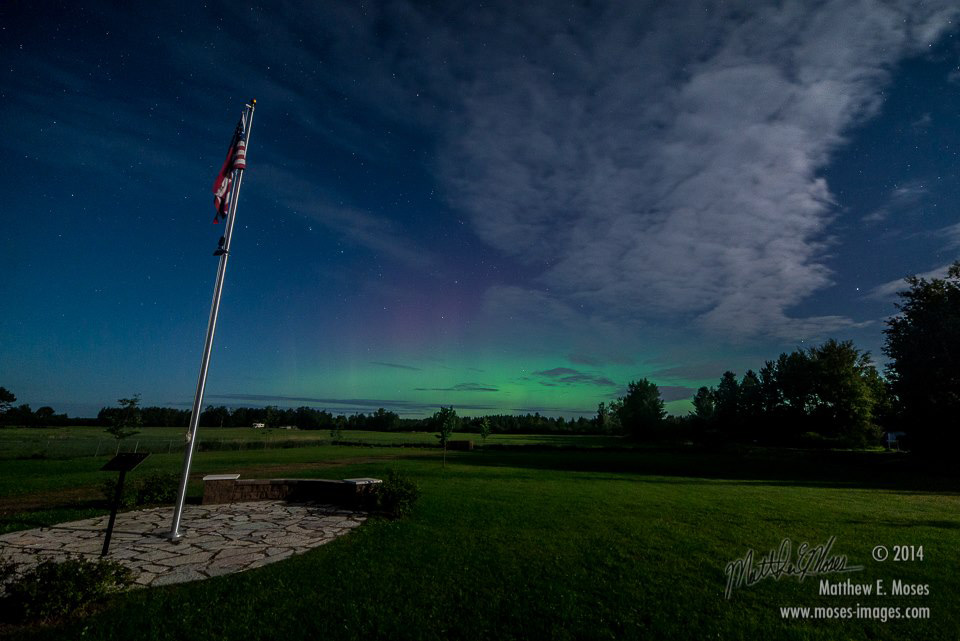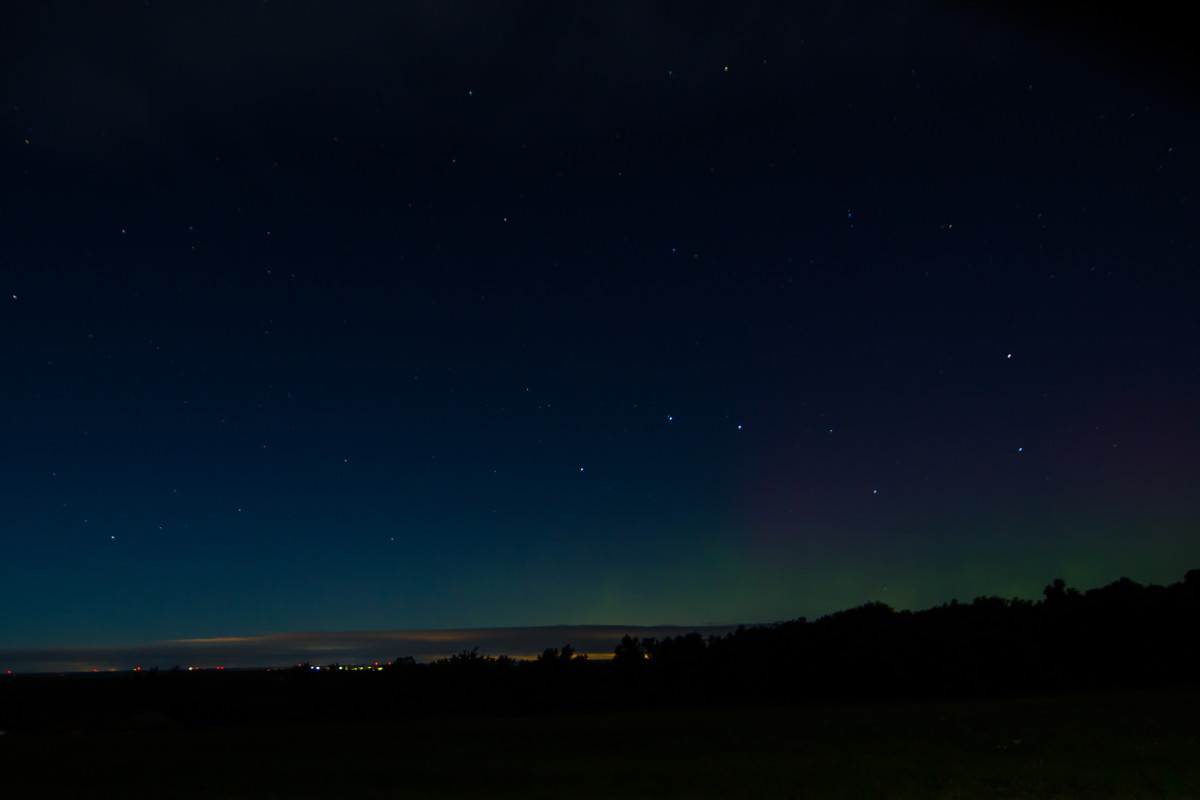Early Aurora Photos from Solar Storm Double Whammy

Skywatchers on the ground are already catching sight of some amazing looking auroras produced by solar material blown out from the sun during two major eruptions this week. Two photos sent in by observers in the United States show curtains of green lights dancing above Earth's surface.
There's a chance that Moses's view of the northern lights could improve tonight. The first wave of solar particles — unleashed during a flare on Monday (Sept. 8) — reached Earth Thursday (Sept. 11). Another round of material discharged during a larger flare Wednesday is due to batter Earth's magnetic field today. [Amazing Aurora Photos of 2014]
Even astronauts on the International Space Station are keeping watch for new auroras. Early today, NASA astronaut Reid Wiseman on the station posted a photo on Twitter of a shimmering green aurora as seen from his post on the orbiting lab. Wiseman posts photos of life in space under the name: @Astro_Reid. He also recorded a short Vine video of himself as he opened a protective window cover on the station's Cupola observation station.
"Beautiful #aurora are coming back. A welcome return indeed!" Wiseman wrote on Twitter.
Auroras are produced when charged particles from the sun interact with particles in Earth's atmosphere, creating the glowing lights people in northern latitudes can sometimes see in a clear sky.
The active sunspot called AR2158 shot off a M4.6 moderate solar flare on Monday, with a very powerful X1.6-class flare following close behind on Wednesday. Both flares had associated coronal mass ejections — hot bursts of plasma sometimes sent out into the solar system by the sun during a solar flare — that are now potentially producing the auroras on Earth.
The double CME could supercharge the auroras, according to space weather experts. The solar storm may make for amazing aurora shows on Earth for people as far south as the northern United States, weather permitting.
Breaking space news, the latest updates on rocket launches, skywatching events and more!
The solar storm probably won't pose much of a threat to spacecraft in orbit and infrastructure on the planet. It's possible that the CMEs might cause some issues for GPS navigation, radio and power grids in the northern United States, but it shouldn't be an extreme problem, according to NOAA's Space Weather Prediction Center Director Thomas Berger.
Editor's Note: If you capture an amazing photo of the northern lights this weekend and would like to share the images with Space.com, you can send photos and comments in to managing editor Tariq Malik at spacephotos@space.com.
Follow Miriam Kramer @mirikramer and Google+. Follow us @Spacedotcom, Facebook and Google+. Original article on Space.com.

Miriam Kramer joined Space.com as a Staff Writer in December 2012. Since then, she has floated in weightlessness on a zero-gravity flight, felt the pull of 4-Gs in a trainer aircraft and watched rockets soar into space from Florida and Virginia. She also served as Space.com's lead space entertainment reporter, and enjoys all aspects of space news, astronomy and commercial spaceflight. Miriam has also presented space stories during live interviews with Fox News and other TV and radio outlets. She originally hails from Knoxville, Tennessee where she and her family would take trips to dark spots on the outskirts of town to watch meteor showers every year. She loves to travel and one day hopes to see the northern lights in person. Miriam is currently a space reporter with Axios, writing the Axios Space newsletter. You can follow Miriam on Twitter.

